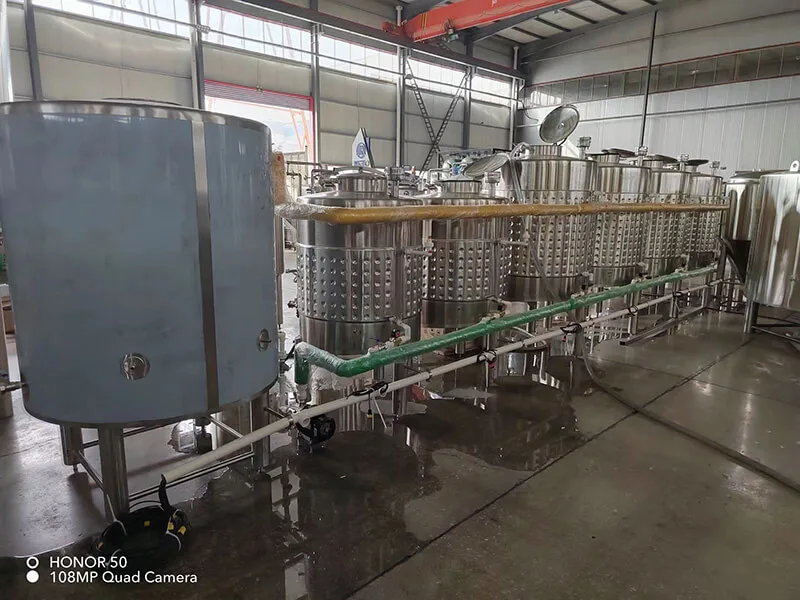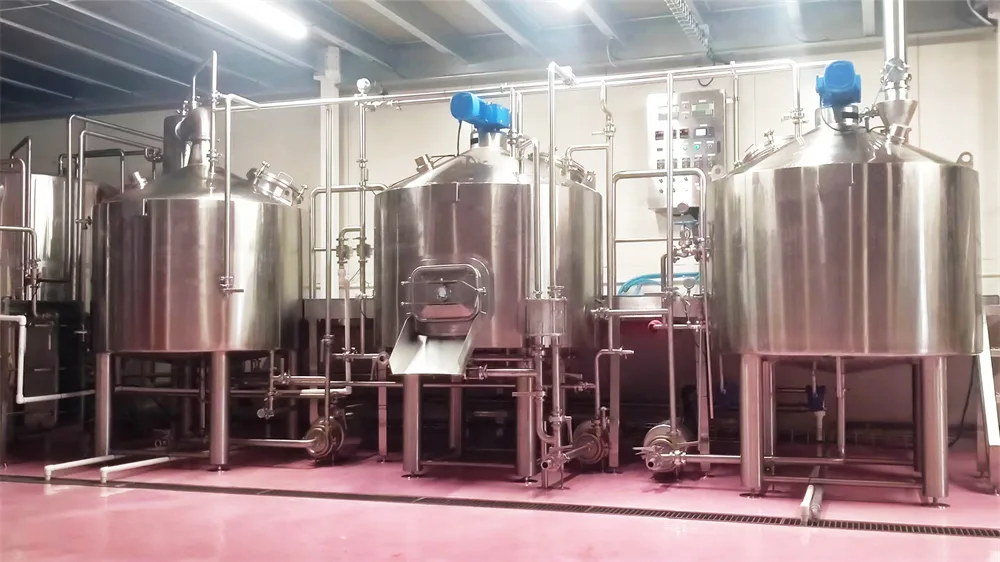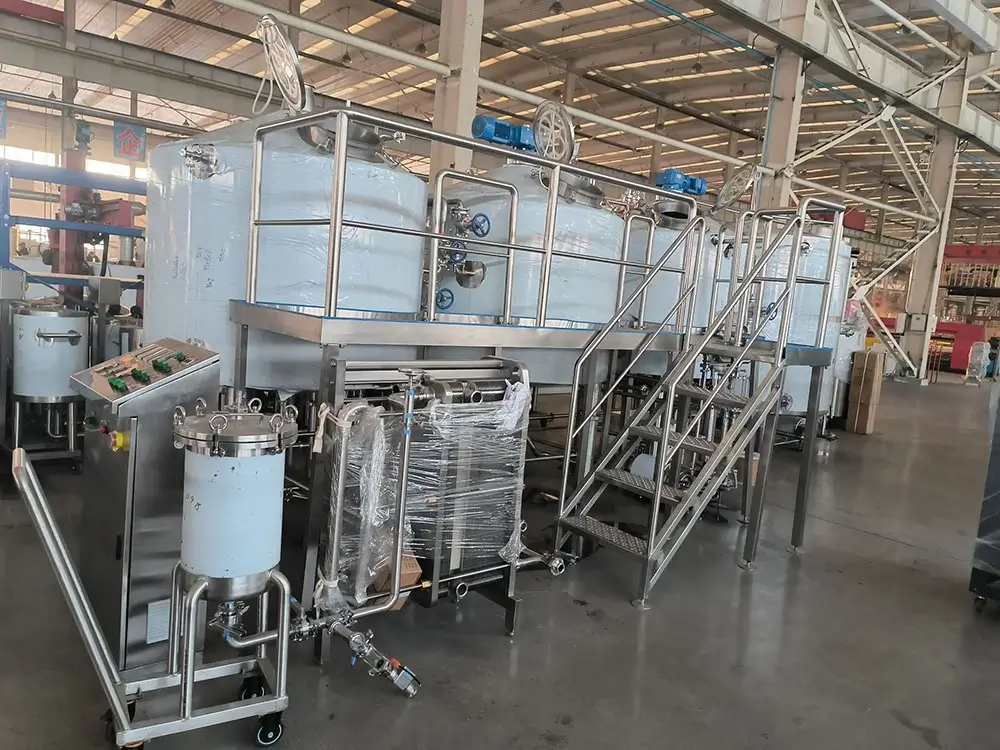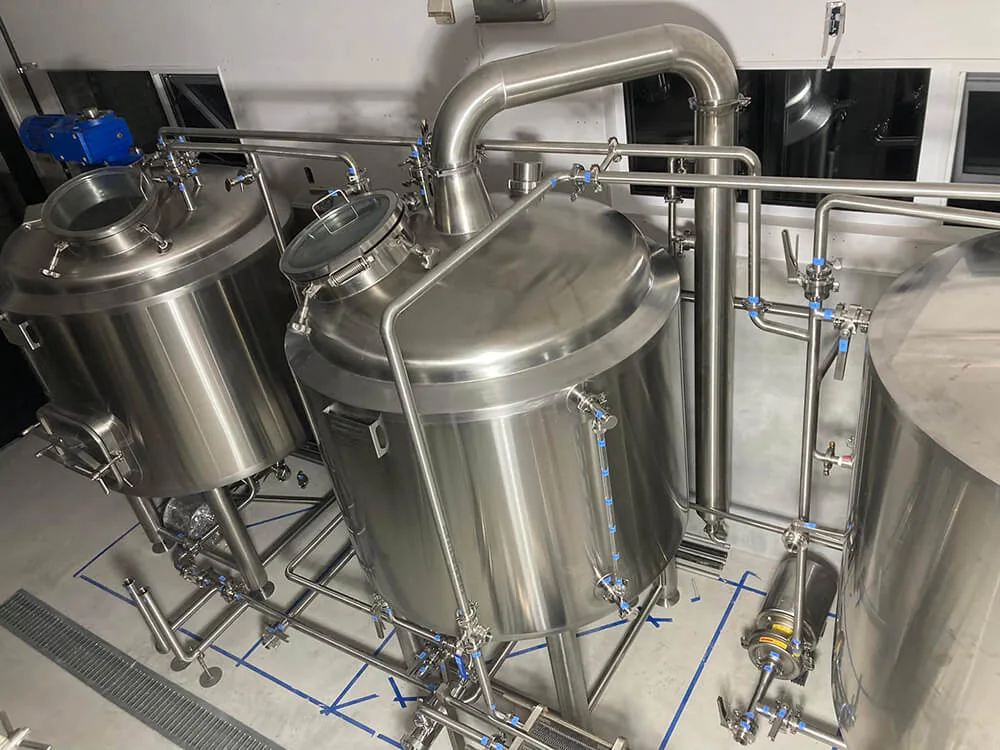プロジェクトの詳細
Stainless steel wine tank (food-grade 304/16 stainless steel) is the core equipment for brewing, corrosion-resistant, easy clean, and no odor residue. Its sandwich structure can achieve precise temperature control from -5℃ to 30℃, meeting the needs of fermentation and aging. The top is with inert gas to prevent oxidation, the tank body has strong sealing performance and supports pressure adjustment, suitable for brewing sparkling wine. With a service life and low maintenance cost, it is an ideal choice for wineries to brew stable and high-quality wine.
When it comes to wine production, choosing the right fermentation tanks is essential. One of the most popular options is stainless steel wine fermentation tanks. These tanks offer several advantages, such as durability, easy maintenance, and precise temperature control. Whether you’re a small winery just starting or a large-scale operation, understanding the benefits, types, and specifications of stainless steel tanks can help optimize your wine fermentation process.
The fermentation tank is a container for microorganisms to carry out the fermentation process, and it provides a place suitable for life activities and metabolism for microorganisms. To adapt to the use of different sizes of breweries, Meto produced a variety of sizes and specifications of fermentation tanks. Customers can choose the most suitable fermentation tank according to their needs. Because there are many types of beverages that need to be fermented, there are also many types of fermenters.
This article provides a detailed overview of stainless steel wine fermentation tanks, including equipment types, processes, capacities, and a comprehensive comparison against other fermentation tanks. We’ll also guide you through the process of choosing the best tank for your winery. Let’s dive in.
Equipment Guide: Types of Stainless Steel Wine Fermentation Tanks
Choosing the right stainless steel wine fermentation tank is a crucial step for wineries of all sizes. Each type of tank offers unique advantages, making it important to understand their features, applications, and how they compare to alternatives like oak barrels or concrete tanks. Below is a comprehensive guide to help you decide which option best suits your winery’s needs.
Open-Top Fermentation Tanks
Open-top tanks are widely used in red wine production. Their open design allows carbon dioxide to escape freely during fermentation. Winemakers also gain easy access for essential practices like punch-downs of grape skins, which enhance color, tannin structure, and flavor extraction.
Best for: Red wines requiring regular cap management.
Advantages: Easy monitoring, traditional style, strong flavor development.
Considerations: Greater exposure to oxygen; best for short-term fermentation, not long-term storage.
Closed-Top Fermentation Tanks
Closed-top tanks are designed to create a sealed environment, reducing oxygen exposure—a key factor in white wine production. Many feature airlocks to regulate pressure and gas release.
Best for: White and rosé wines.
Advantages: Controlled environment, protection from oxidation, better suited for delicate flavors.
Considerations: Limited accessibility for manual punch-downs.
Variable-Capacity Tanks
Variable-capacity tanks feature adjustable lids, making them suitable for fermenting different batch sizes in one vessel. This versatility is especially beneficial for small wineries or those experimenting with limited production runs.
Best for: Small to medium wineries with varying production volumes.
Advantages: Highly flexible, cost-effective for small batches.
Considerations: Requires careful sealing to avoid oxidation when used at lower capacity.
Jacketed Tanks
Jacketed tanks are equipped with a cooling or heating system that surrounds the vessel. This enables precise temperature regulation, which is critical for certain grape varieties and fermentation styles.
Best for: Wines that require strict temperature control (e.g., Chardonnay, Pinot Noir).
Advantages: Consistent fermentation conditions, prevents stuck fermentation, enhances wine quality.
Considerations: Higher investment cost; requires reliable cooling/heating source.
Conical Fermentation Tanks
These tanks feature a cone-shaped bottom, allowing sediment and lees to settle naturally. This design simplifies racking and improves wine clarity without excessive handling.
Best for: All wine types, especially for operations prioritizing efficiency.
Advantages: Easy lees removal, reduced wine loss, efficient cleaning.
Considerations: Typically more expensive than flat-bottom tanks.
Combination Fermentation Tanks
Combination tanks can serve as both fermenters and storage vessels. They provide flexibility while reducing the need to transfer wine between containers.
Best for: Wineries seeking operational efficiency and space savings.
Advantages: Multi-purpose design, cost savings on additional equipment, reduced wine handling.
Considerations: Not as specialized as tanks designed solely for fermentation or storage.
Stainless Steel vs. Oak and Concrete
While stainless steel is the most popular choice due to its durability, hygiene, and precise temperature control, traditional alternatives remain relevant:
Oak barrels add flavor complexity, tannins, and micro-oxygenation but require higher maintenance.
Concrete tanks offer natural insulation and micro-oxygenation, delivering unique texture and minerality but are heavy and less flexible in size options.
Conclusion
Stainless steel wine fermentation tanks offer unmatched control, durability, and versatility. From open-top designs for robust reds to jacketed tanks for delicate whites, wineries can tailor their equipment choices to enhance wine quality and production efficiency. By carefully weighing the benefits of each type—and comparing them to traditional options like oak or concrete—wineries can select the tanks that best support their style, scale, and long-term goals.
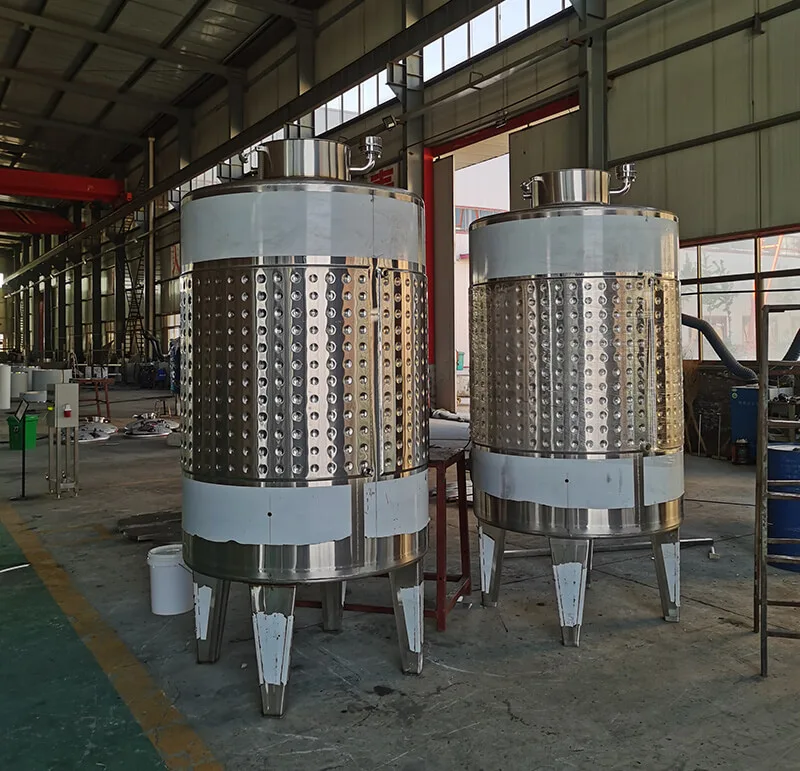
Standard Features
Corrosion resistant, Type 304 stainless steel construction
Miller Temp-Plate Heat Transfer surface provides efficient cooling using glycol refrigerant
Precision-built manway assemblies
installed with a smooth radius on both sides of the manway collar to ensure superior cleanability as well as improved structural integrity
.Large radius corners for thorough, easy cleaning
Strong,12-gauge truncated top heads and12-and 14-gauge sidewalls
Custom Made Wine Tanks
Our flexible custom designs ensure that the available space in your winery is optimally utilized and that the tanks are tailored to your company’s specific requirements. We adapt the stainless steel wine tanks to the
configurations of fittings, pipes and valves you require. Therefore, we are able to supply a wide range of stainless steel wine tanks with the necessary equipment:
Sample valve: Enables hygienic sampling during fermentation and maturation without compromising wine quality.
Thermometer: Ensures accurate monitoring and control of fermentation temperatures.
Cooling jacket Leveling feet: Provides efficient temperature regulation for consistent fermentation results.
Pumping system: Facilitates smooth wine transfer and circulation within your winery.
Stirrers: Helps maintain uniform fermentation and improves yeast suspension.
Our Stainless Steel Wine Tanks can put you on the path toward success and support your growth over time. CALL US TODAY to learn more about the different style wine tanks we offer. Our excellent sales team will guide you to the perfect tank and equipment in your wine making journey.

